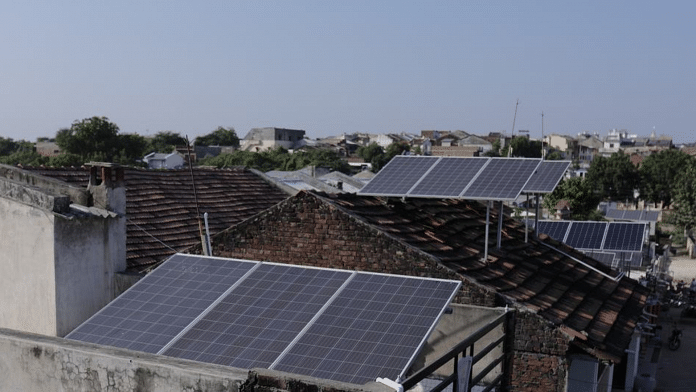In Gujarat, India, a quiet solar revolution is underway that is completely out of step with the rest of the country.
Gujarat has nearly two-thirds of all residential rooftop solar power in India, despite having just 5% of India’s 1.4 billion population and 6% of its land mass.
India needs a lot more solar power as part of its plans to get half of its electricity requirements from renewable energy sources by 2030, and ultimately reach net-zero emissions by 2070. Solar now accounts for around 7% of India’s electricity generation – according to the Central Electricity Authority of India – at more than 60GW.
The good news is India has enormous solar energy potential. It gets on average 300 sunny days a year, and the IEA says solar power there is set for “explosive growth”, not least because solar will be cheaper than coal-fired power by 2030, even if including associated battery storage costs.
But there is a long road ahead. Solar capacity needs to be nearer 370GW by 2030 in the IEA’s Sustainable Development Scenario for India, and progress has been sporadic across the country.
So what did the state of Gujarat do to become such a clear leader in rooftop solar installations?
A new study from the Institute for Energy Economics and Financial Analysis (IEEFA) and partner organization JMK Research lays out what Gujarat is doing differently to other Indian states.
Also read: India’s first fully solar village in Gujarat lights up the lives of its poor residents
4 steps to solar power uptake
It started in 2010 when the government launched its National Solar Mission policy to promote solar power, and provide residential rooftop subsidies. In 2019, Gujarat introduced its own subsidy system called Surya — named after the Hindu sun god — with a target of 1.6GW of solar capacity from 800,000 residential rooftop solar units by the end of March 2022.
Gujarat’s residential rooftop solar segment grew from 0.085GW in 2019 to 1.2GW by March 2022. Although the state only achieved 77% of the target capacity, the state’s residential market share grew rapidly in that time. The report illustrates how Gujarat achieved such large-scale deployment by doing the following:
1. Ensuring adequate supply
Gujarat built up a large number of preferred — or empanelled — vendors of solar power installation for residential consumers.
2. Ensuring adequate demand
A campaign of advertising the initiative through SMS, social media and other mediums got the message of rooftop solar subsidies out to the population.
3. Digitization
The state created a single digital portal that makes the scheme easier for both consumers and vendors to navigate, from initial registration for the subsidy all the way to the final payment. And the digital portal also helps to keep transactions transparent.
4. Timely disbursal of subsidy
The digital portal also updates on the status of the subsidy on a daily basis, giving valuable updates to those involved.
In addition to the 4 key initiatives, Gujarat also benefited from the Ministry of New and Renewable Energy’s (MNRE) Phase Two solar programme from 2019, which set out to achieve 4GW of solar capacity from residential properties nationally. As of July 2022, 3.1GW has been allocated, with nearly two-thirds of that figure earmarked for Gujarat.
Unlocking solar potential across the nation
IEEFA and JMK Research project that India will have increased residential rooftop solar capacity by 60% to 3.2GW by March 2023, with Gujarat, Maharashtra and Haryana states leading the way.
“Gujarat showcased how proactive support from state agencies, streamlining relevant procedures and effective implementation of incentives to end consumers can lead to the successful adoption of rooftop solar,” the report concludes.
It recommends state governments make efforts to streamline subsidy-related procedures, and emulate the initiatives utilized in Gujarat that led to the state becoming a shining example of how to roll out solar power to the people.
This article was originally published in the World Economic Forum.
Also read: How Gujarat is building ‘world’s largest’ solar power park, close to its border with Pakistan






